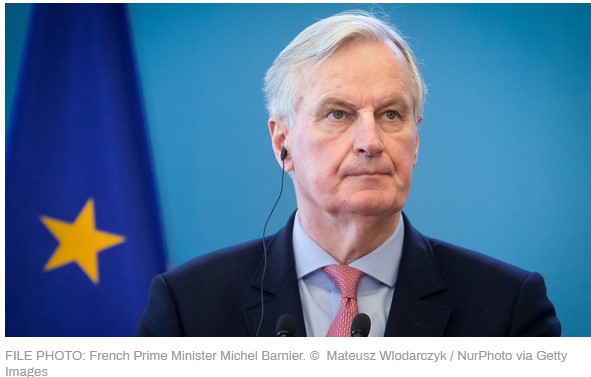
The foto has taken from The Hankyoreh
STRATEGIC ASSESSMENT. Eight Tajik nationals were arrested earlier this month as part of an investigation into individuals with suspected links to terrorist groups using the U.S.-Mexico border to enter the country. The eight individuals, according to reporting by CNN, entered the United States through the southern border and requested asylum through U.S. immigration law. The individuals “had already been vetted by immigration authorities and allowed into the country.” It is worth stressing that “there is no hard evidence indicating that they were sent to the US as part of a terror plot;” however, at least a few members of those arrested had “expressed extremist rhetoric in their communications.”
The individuals were arrested in New York, Los Angeles, and Philadelphia. Some of those in the group are believed to have potential connections to Islamic State’s (IS) Khorasan affiliate based in Afghanistan but populated by large numbers of Central Asians, including individuals from Tajikistan and Uzbekistan. The operation to arrest the individuals included close cooperation between the Federal Bureau of Investigation’s (FBI) Joint Terrorism Task Force (JTTF) and the Department of Homeland Security (DHS), with those apprehended now being detained by U.S. Immigration and Customs Enforcement (ICE), pending extradition. The suspects were monitored using wiretaps to track their movements and communications.
The arrests did not occur in a vacuum, but rather against the backdrop of an increasing operational tempo for Islamic State Khorasan (ISK). This Islamic State franchise group has assumed the mantle of most operationally active of any of the IS branches worldwide. In 2024 alone, the group has launched several successful transnational attacks — Iran, Türkiye, and Russia, to name a few — and has been implicated in multiple failed attempts, including several in Europe. There is growing concern over an ISK plot that could seek to target the 2024 Paris Summer Olympics, which are set to kick off later next month.
A few migrants who illegally crossed the southern border have been found to have ties to terrorist groups, including al-Shabaab, ISK, and Hezb-e-Islami Gulbuddin (HIG). The HIG terrorist, Mohammad Kharwin, was already listed on the FBI’s national terror watchlist when he was processed by Customs and Border Protection (CBP). While CBP, ICE, and the FBI all had information on Kharwin, the information was siloed and classified, resulting in an inability to confirm his presence on the watchlist or share classified concerns during his trial, which ended in his release on bond.
Similar events occurred in the al-Shabaab terrorist’s case, in which he was initially deemed a mismatch by the Terrorist Screening Center, which later redetermined he was a confirmed member of al-Shabaab, having been “involved in the use, manufacture or transport of explosives or firearms.” He was subsequently arrested and listed on the FBI’s national terror watchlist.
It took over a year for these terrorist affiliates to be identified and taken into custody, proving that the frantic speed of processing on the southern border, resulting in the lack of initial recognition and siloed, classified information in different organizations for these cases, is becoming a more significant security concern. Moreover, the failure to enact sustainable immigration reform – seemingly stymied by a lack of political will in the U.S. Congress – has led to diminished legal pathways for migrants to enter the country in regularized and controlled ways. This has motivated many to seek irregular pathways through human smugglers to cross the border, leading to nearly 8 million total encounters at the southwest border since 2021, according to CBP statistics. Such numbers not only overwhelm and contribute to backlogging the immigration system but can increase the challenges in preventing violent extremists, terrorists, or other malign actors from entering the country.
These incidents coincide with more concerted efforts by terrorists to move individuals across borders. Last August, a human smuggling ring was disrupted that helped move foreigners (including Chechens, Russians, Uzbeks, and Georgians) residing in Türkiye to the United States. The smuggling network had connections to an individual linked to Islamic State. The week after the eight Tajiks were arrested in the U.S., the U.S. Treasury Department announced that similar to August 2023, Washington and Ankara partnered to disrupt another human smuggling ring linked to IS, with connections to Uzbekistan, Türkiye, and Georgia. The emir of Islamic State’s Georgia province, Adam Khamirzaev, was designated under Executive Order (E.O.) 13224 for his role in providing guidance to this smuggling network on behalf of IS.
In March 2023, U.S. Central Command (CENTCOM) Commander General Michael Kurilla expressed his opinion that ISK’s ultimate goal was to conduct an attack against the U.S. homeland. However, he mentioned that an attack in Europe was perhaps more likely due to several different factors. The recent arrests of the eight Tajiks have led to increased scrutiny on the U.S. southern border, and several members of Congress have called for answers as to some of the details related to this particular incident. Given the partisan nature of the U.S. border debate, especially in an election year, there are concerns from analysts in the counterterrorism community that objective, evidence-based assessments will be tainted by politics.






